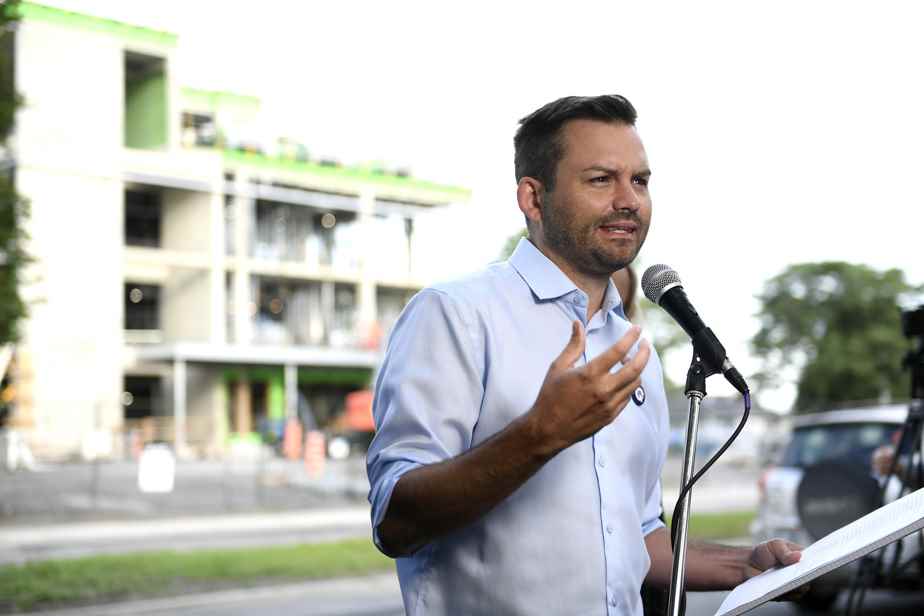(Gatineau) The Parti Québécois is promising $3 billion a year to increase the supply of home care in Quebec. How to do this in the midst of a staff shortage remains unclear. But the PQ plan is not magical thinking, defended Paul St-Pierre Plamondon.
Posted at 1:03 p.m.
Chief Paul St-Pierre Plamondon presented a first commitment to seniors on Friday by promising to “triple the current offer” of home care. A Parti Québécois government would invest $3 billion a year to care for seniors at home, so that within five years, half of the sums allocated to long-term care would be injected into home care.
“The idea here is to spend to reverse a model that is not financially viable, that of concrete,” explained Mr. St-Pierre Plamondon in front of the construction site of the Gatineau seniors’ home. The Parti Québécois would also abandon this model by slowing down projects for seniors’ homes still in the pipeline. Only those whose construction has begun would be completed.
Quebec must deliver 33 of the 46 seniors’ homes and alternatives promised in 2018 by the end of the year. The other constructions must be during the year 2023. The Parti Québécois would give up the conversion of CHSLDs into seniors’ homes. Any amounts provided for in these projects (at the planning stage in the Quebec Infrastructure Plan) could instead be reinvested in CHSLDs.
Paul St-Pierre Plamondon believes that this shift towards home care would “give air” to hospitals and even improve the working conditions of caregivers.
But on this subject, where will we find the staff to triple the supply of home care? To this question, the PQ leader had trouble clarifying his thoughts. He defended himself from dreaming in color in the context of the serious labor shortage affecting the health and social services sector.
Why would anyone say that to me, if there are a good number of European countries which not only succeed, but which considered that it was absolutely compulsory as a turnaround?
Paul St-Pierre Plamondon, leader of the Parti Québécois
He feels that his approach would not result in the addition of staff. ” [L’approche des soins à domicile] allows more care to be provided with the same number of people”
“There are other health care professionals who can help provide care, but right now we’re not involving them, so by expanding the number of people we give the right to help our seniors, provide care, we no longer have people who contribute, ”he summarized, referring a few times to his candidate in Hull, Camille Pellerin Forget, a physiotherapist from the CISSS de l’Outaouais.
This contributed to the development of the Parti Québécois health plan, presented in June. Last May, the PQ had also presented its aims to triple the supply of home care.
Mme Camille Pellerin Forget explained at a press conference that the key to increasing care lies in the decompartmentalization of professions. She gave the example of a physiotherapist who could order an X-ray for a senior who has fallen, which would save the doctor from performing the act. The PQ also wants to maximize the contribution of social economy enterprises in home care (EESAD).
Increase in funding
The Parti Québécois promises to invest $3 billion a year in home care. This is “a budgetary choice” which will be detailed in the financial framework of the training.
Spending on health and social services in home care will reach 2 billion in 2022-2023, according to figures from the Ministry of Health and Social Services. The budget allocated to home care is up 16.8% compared to 2018-2019. The Legault government prides itself on having initiated a real shift towards home care by investing “historic sums”.
Some 17,521 Quebecers are waiting for their first home care service, according to the MSSS.

